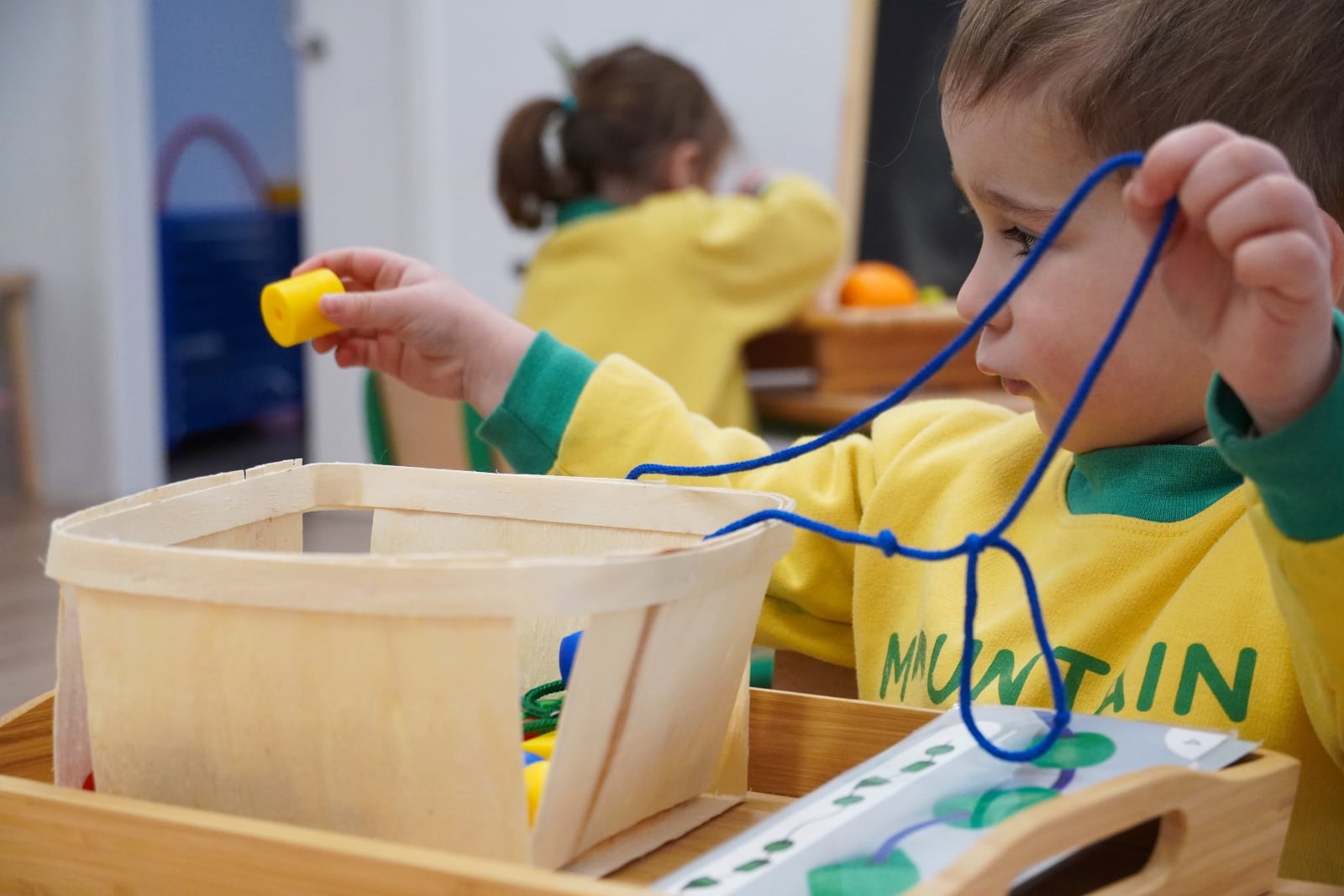Practical Life
“One of the most important practical aspects of our method has been to make the training of the muscles enter into the very life of the children so that it is intimately connected with their daily activities. Education in movement is thus fully incorporated into the education of the child's personality..” — María Montessori
The most important area in our Montessori school is the area of practical life.
We have two differentiated practical life areas; the personal care area where students learn to develop their autonomy, carrying out basic care activities such as blowing their nose and brushing their hair.
The second area caring for the environment, in which they sweep, clean, tend, squeeze juices, among other things.
At Mountain Peak Montessori School we know that promoting the independence and autonomy of students is essential for the development of their self- esteem.
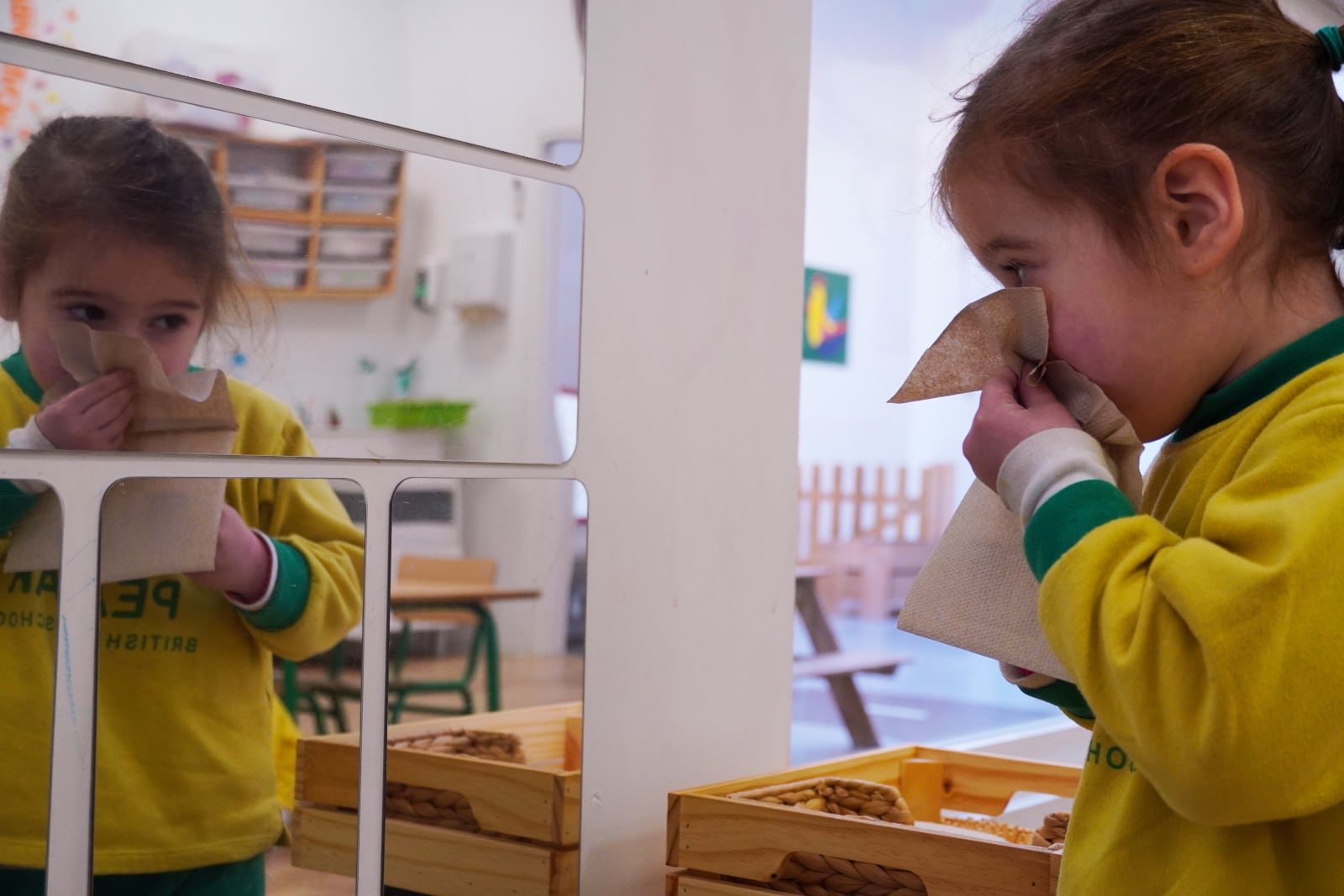
In this area, social skills, independence and concentration are indirectly worked on, essential skills for adult life.
The activities that we find in this area are usually sequential. This allows the child to generate habits and routines, enabling them to feel self-confident in order to apply the knowledge acquired both inside and outside the classroom.
In this area we also find examples of symbolic play, equally important among children.
One of the many benefits of symbolic play for children is the ability to develop creativity, allowing the child to imagine and create new situations in which they can anticipate events that happen in their day to day life.
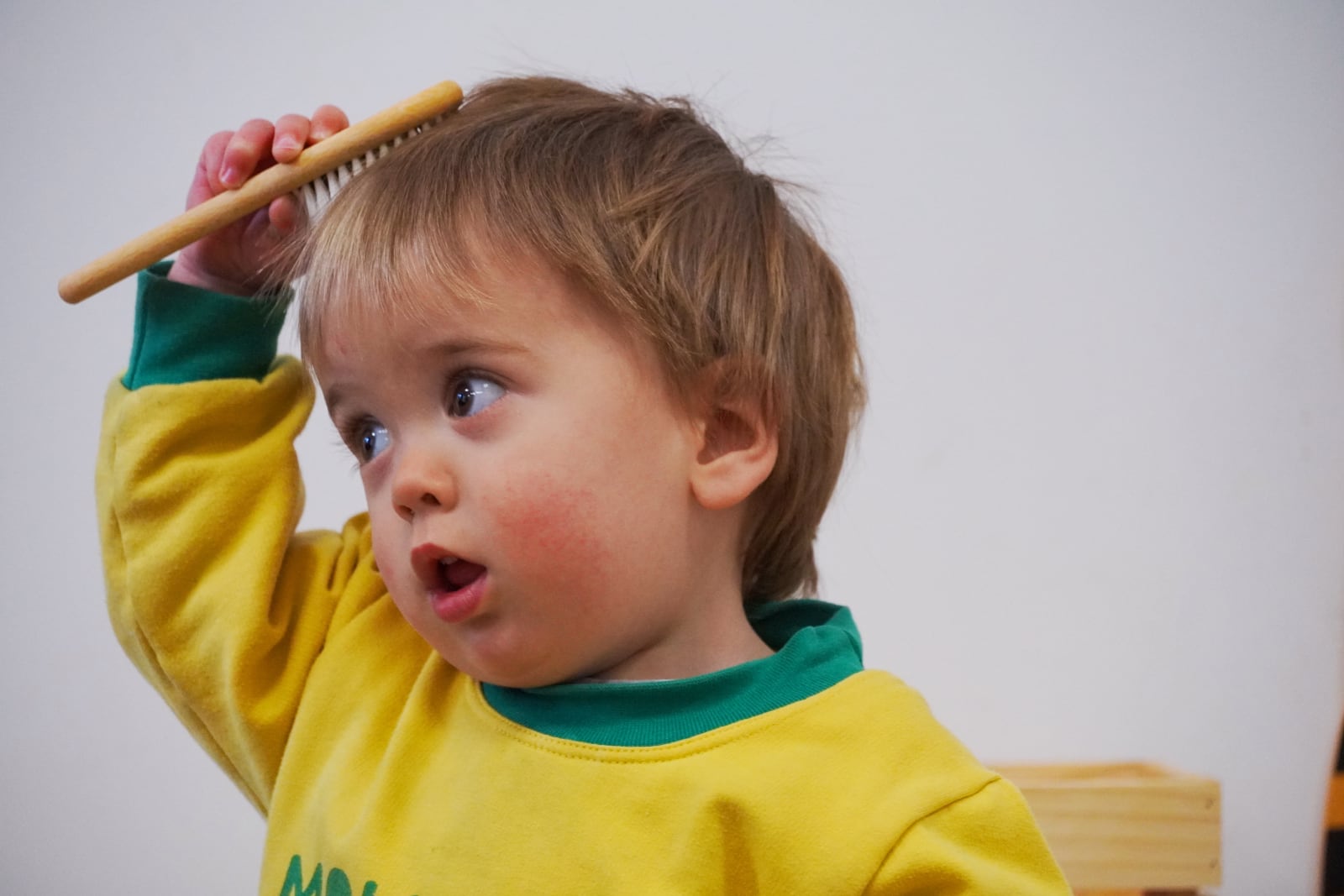
Art
“The greatest help you can give your children is the freedom to go about their own work in their own way, for in this matter your child knows better than you.” — María Montessori
At Mountain Peak Montessori School we provide our students with different materials to encourage their artistic expression and it is up to them to choose how to use them.
This is especially important for those who are, as yet, non-speaking, as they explore different methods of communicating with the world around them.
In the art area they also work with different forms of art, such as music, ceramics or painting.
Children show curiosity for tools and materials, explore their motor, visual and spatial abilities. They also explore and discover a language of their own, that of being able to express their emotions on a material.
Through art they indirectly learn colours, shapes and textures.
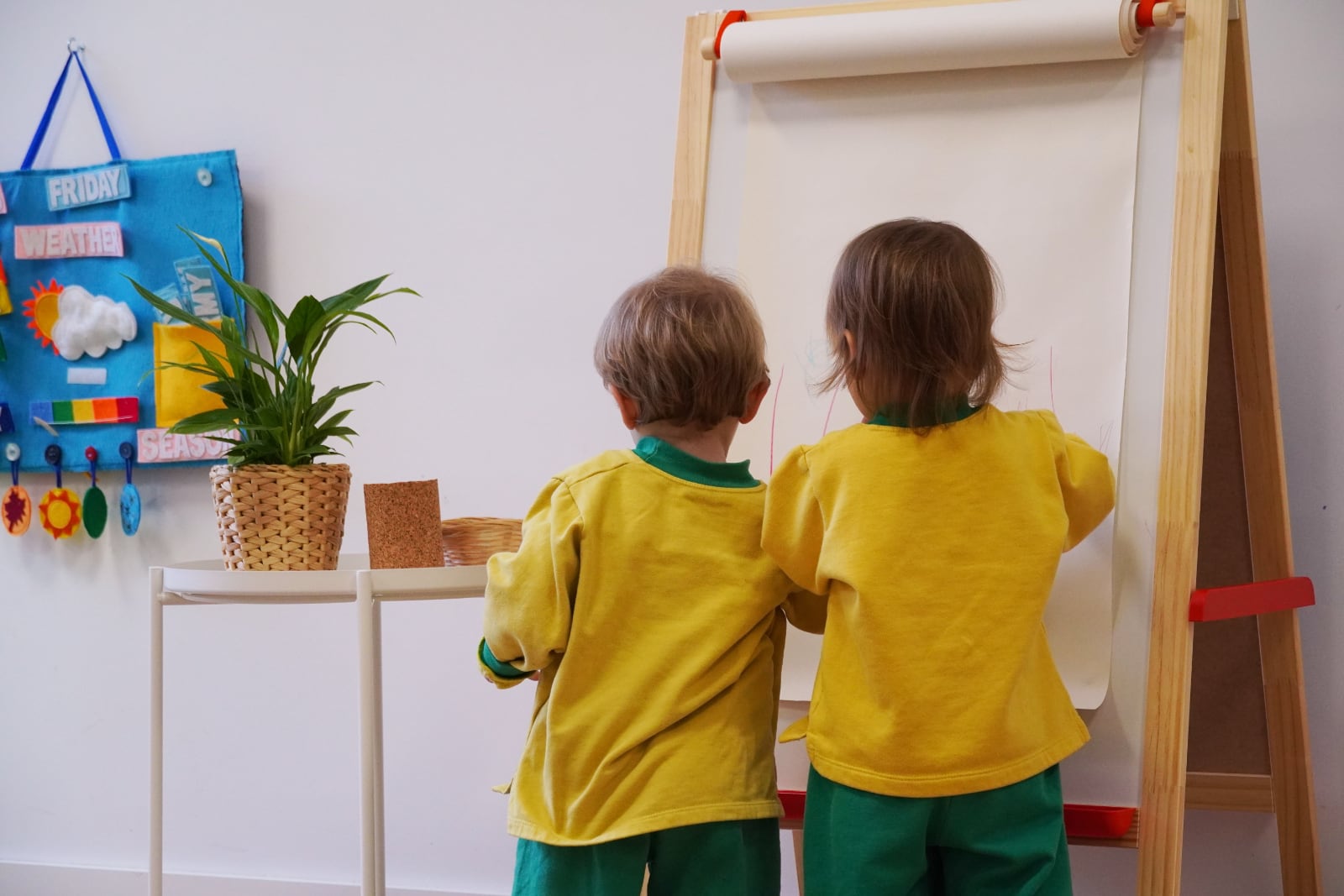
Language
“A child learns to adjust himself and make acquisitions in his sensitive periods. These are like a beam that lights interiorly or a battery that furnishes energy. It is this sensibility which enables a child to come into contact with the external world in a particularly intense manner. At such a time everything is easy; all is life and enthusiasm.” — María Montessori
In this area we can find puzzles, stories in English and animal figures with their real representations.
This area is a first approach to reading and writing where at Mountain Peak Montessori School we use a notebook in which we work on stroke control and number and letter recognition.
We work both oral language, where the vehicular language is English, and sign language, where our students learn to communicate in baby sign language, promoting the inclusion of all groups in the classroom.
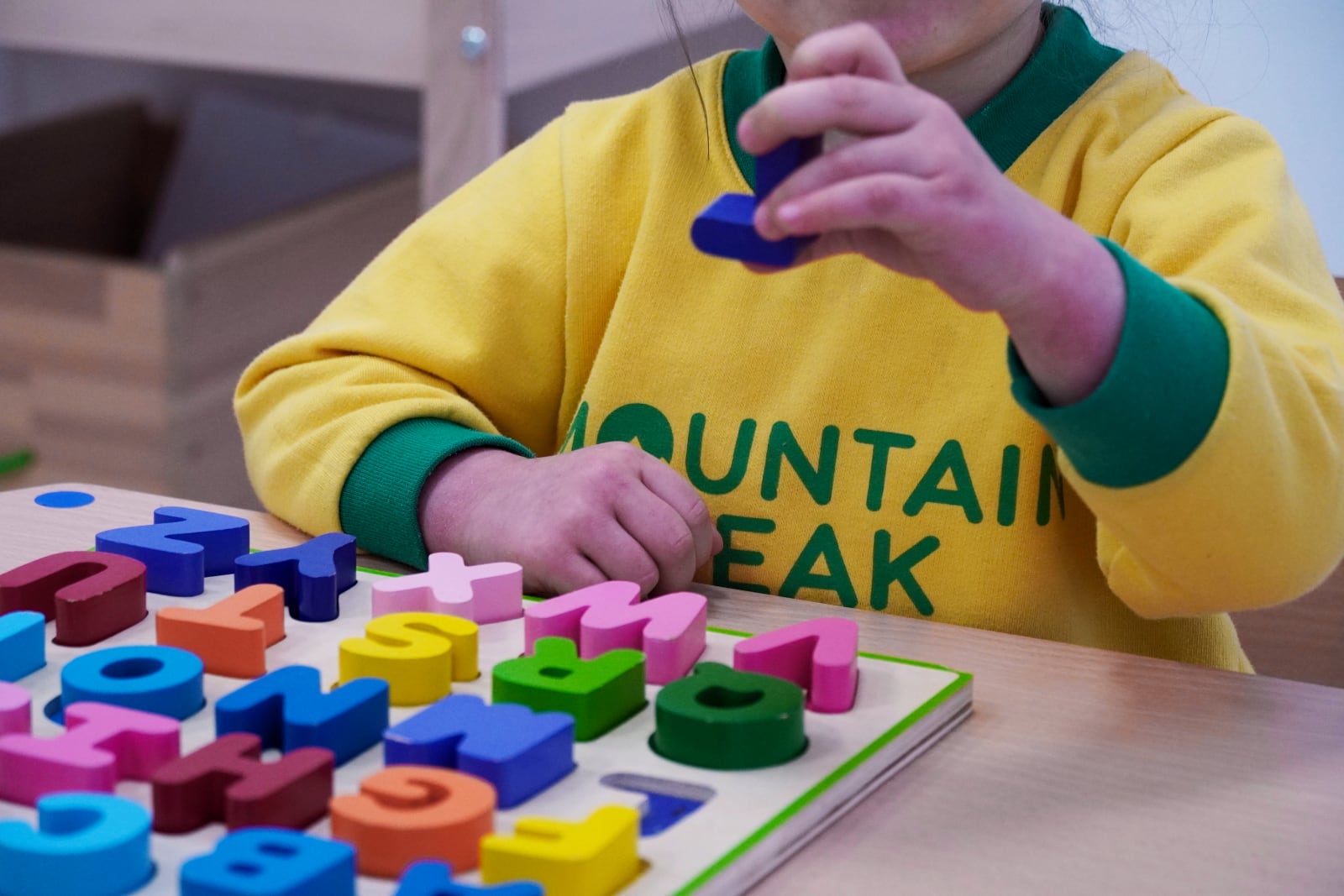
Logic-Mathematics
“This system in which a child is constantly moving objects with his hands and actively exercising his senses, also takes into account a child's special aptitude for mathematics. When they leave the material, the children very easily reach the point where they wish to write out the operation.” — María Montessori
Mathematics is one of the most beautiful areas to develop in Montessori pedagogy.
In this area all materials we work with are manipulative, allowing us to explore order through the senses.
Mathematics prepares the child's logical thinking and relates to shapes, patterns and serialization. Thanks to the use of sensory materials, different parts of the brain are stimulated.
The child's mind innately tends to order, classification and repetition, so the activities we present in this area should offer such possibilities.
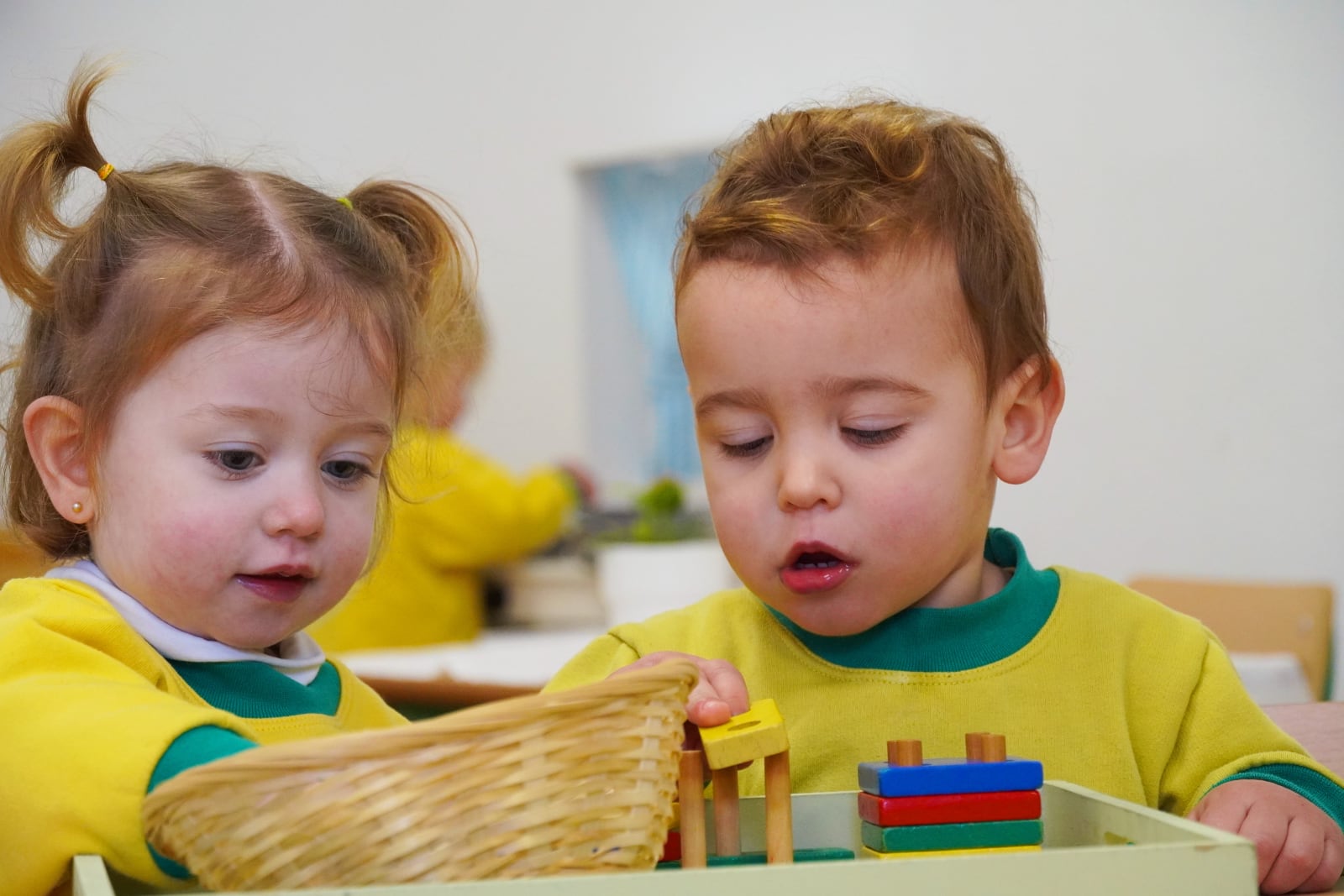
We create materials for the needs of each child, being a school in constant adaptation and change.
Logical-mathematical thinking begins at birth, not only including traditional numbers and sequences, but during the first years it comes from the child's actions on the objects he/she encounters.
In the future, the child begins to question how these objects might behave in other circumstances, thus developing logical thinking.
The materials should always be self-correcting, where it is the child themselves who should be able to recognize when they have made a mistake, so that they can correct their error and learn in a natural way.
